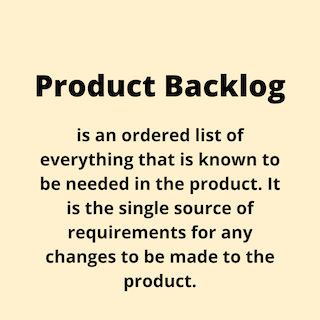Benefits and Role of an Agile Product Owner
The basics every Agile Product Owner needs to know!
by Lenka Davis
Product owners are a key role to have on your team to keep your complex project running smoothly, quickly and efficiently. If you are reading this and looking for the following answers, you are in the right place.
What are the benefits of having a product owner on your team?
What are the product owner’s responsibilities?
Bonus: Traits of a good product owner
“[The Product Owner’s role is for] maximizing the value of the product resulting from work of the Development Team”
How product owners successfully maximize value varies widely across industries and companies but the role remains consistent.
In rowing, the person sitting in front (the coxswain), knows the direction of the boat much like a product owner knows the direction of the product.
One way to think about the product owner is that they are like the coxswain on a rowing crew. They are the only ones that face forward and in the direction the boat is going, unlike all the rowers.
Sometimes the coxswain acts as the coach since the coach can’t communicate with anyone on the boat. Think of the product owner as the coxswain for the product.
Benefits of having a product owner
One way to look at this is what would your project look like with no product owner or with many of them? The recommendation is to have one Product Owner so that in the end, one person knows enough about the product and market to make the final decision on what to build and when to build it. If you have more than one it can result in a stalemate on a key decision.
“The Product Owner is one person, not a committee. The Product Owner may represent the desires of a committee”
If you do not have a designated Product Owner then there is no leadership or product and market expert. That causes the team to have unclear direction of the product and conflicting descriptions of the value of each feature.
When teams build technical products they do not have the full requirements before they start, or even during development for that matter. One benefit of having a product owner is they are able to make decisions on the direction of product features for the development team. They are the most knowledgeable people about the industry and the market in which their product exists.
What are the product owner’s responsibilities
Convey the vision
The product owner is responsible for the vision of the product. They define the features of the product, the content, and decide on the release date. They prioritize the features according to the value and the ROI of those features to the business. Features can be reordered in priority as more information is learned from the customers or as the market changes. If it is necessary to make scope or schedule changes they are the final say on what is needed. Prioritizing and detailed feature information is all managed in the product backlog. If the feature is not on the product backlog it does not exist.
Unite the entire team
Because there is one product owner and they are responsible for managing the direction of the product, they are most successful when they can lead the team all in the same direction.
The decisions are reflected in the written content and the order of the user stories in the product backlog. Know your stakeholders and anyone or any other team that will be affected by the release of your product.
“The entire organization must respect his or her [Product Owner’s] decisions.”
Know the market
In order to make good product feature decisions the role of a market analyst is part of being a product owner. Being able to do research and access market knowledge from both past working experience or calling upon experts help product owners deliver great products. It helps to anticipate problems or needs and prepare the team to handle them.
Typically, stakeholders include customers, users, and sponsors.
People funding the project
Business Managers and Business Architects
Data Architects and Database Administrators
Portfolio and Project Managers
Direct and indirect Users (internal and external customers)
Account and Sales Managers
Developers’ team including Engineers, Designers and PM/BA
From Visual-Paradigm
Traits of a good product owner
Makes decisions - Knows what NOT to build and says No to features that are not necessary at this time
Middle man between stakeholders, resolve conflicts
Open mindedness when considering new features
identify his key needs and pain points
accuracy in estimating the market size and viability of a prospective product or feature
Positive and meet deadlines
Knows competitors
Contact us to see how we can help manage your next project.
Fun Fact
If you are a visual person or you are coaching a team on product ownership, watch this YouTube video, Agile Product Ownership in a Nutshell, released in October of 2012 by Henrik Kniberg. With 4.2 million views and lots of positive comments, it’s Henrik’s most popular video. Henrik Kniberg is a minecraft game designer and co-founder of GoClimate.com. GoClimate is a social company fighting climate change by reducing greenhouse gas emissions.
Resources
Identify Scrum Project Stakeholders - Visual-paradign.com
Product Owner metrics to track - Atlassian.com
7 Key product owner responsibilities - Lucid Chart
What is a Scrum Product Owner: Comparison of other professions to a product owner - Agile Learning Labs
Lenka Davis is a Managing Partner at Fly to Soar. She has worked in marketing, managing projects and building tools in the high-tech industry for Fortune 100 companies and also ran her own business. Follow Lenka and the Fly to Soar Team on Instagram @flytosoarcompany





